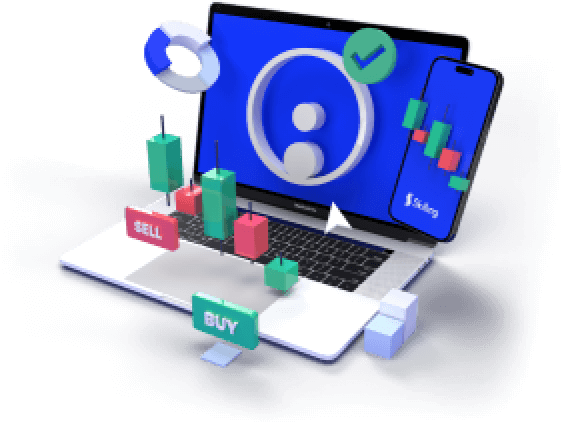The Volvo B stock represents one of Sweden’s most iconic industrial names, known for its operations in trucks, buses, construction equipment, and marine engines. As a global exporter, the company is deeply sensitive to macroeconomic trends — making it a key stock for traders seeking exposure to cyclical themes.
In 2025, Volvo made two major strategic moves: it acquired Swecon, its construction equipment dealer, for SEK 7 billion — a move expected to strengthen its margin control and downstream integration in Northern Europe. Simultaneously, Volvo Construction Equipment announced the sale of its stake in SDLG, marking a significant strategic withdrawal from the Chinese market. This pivot is seen as a refocus on core markets and value generation outside China, where overcapacity and local competition have weighed on margins.
Access 1,200+ global CFDs instruments.
Access a plethora of trading opportunities across the financial markets.

What Drives the Volvo B Stock?
Volvo’s performance is driven by:
- Global economic growth – as transport and infrastructure demand rise or fall
- Raw material and input costs – particularly steel and fuel
- Emerging market orders – key for trucks and construction
- Backlog and delivery data – watched closely by traders
- Dividend announcements – Volvo is known for strong payout years
The Swecon acquisition strengthens Volvo's aftermarket positioning in key European markets, while the SDLG exit highlights its flexibility in responding to changing global dynamics — two elements that traders may interpret as signals of operational streamlining and capital discipline.
Volvo is listed on Nasdaq Stockholm and trades with high volume and technical clarity, making it suitable for CFD trading.
Why Traders Monitor Volvo B Closely
- Cyclical volatility: Price often responds strongly to global PMI data
- Event-driven movement: Reacts to earnings, delivery stats, freight index changes
- Technically responsive: Defined levels, strong reactions to moving averages
- Seasonal patterns: Q1 and Q3 often feature clearer trends
Volvo is also a common component in sector rotation strategies, particularly in European cyclicals. The Swecon deal — which drew strong local enthusiasm in Eskilstuna, home to Swecon’s HQ — is expected to reinforce Volvo’s control over its aftermarket ecosystem, a potential edge in competitive European construction markets.
Technical and CFD Strategy
Traders often apply:
- RSI + MACD divergence for mean-reversion setups
- Breakout strategies around earnings releases
- 50-day and 200-day moving average tracking
- Volume confirmation on breakouts or reversals
CFD platforms like Skilling allow:
- Long/short positioning without share ownership
- Plattform-based trading with market alerts and stop-loss orders
- Access to high liquidity and low spreads, even during earnings
These setups may become more attractive as Volvo reshapes its geographic exposure, shedding less profitable operations while consolidating regional dominance.
Risks and Considerations
While fundamentally strong, Volvo B is exposed to:
- Sudden shifts in global transport demand
- FX volatility (especially EUR, USD, CNY)
- Supply chain delays in key markets
- Policy shifts affecting diesel/truck regulation
The strategic withdrawal from China reduces exposure to regulatory unpredictability and volatile local margins but may also impact future growth in Asia. Traders will closely monitor whether capital is redeployed into higher-return projects in Europe or North America.
Capitalise on volatility in share markets
Take a position on moving share prices. Never miss an opportunity.

Conclusion: A Core Cyclical Stock for Active Traders
Volvo B is ideal for traders seeking structured price action with macro sensitivity. Whether used in breakout trades, mean-reversion setups, or sector hedging, this stock belongs in any cyclical watchlist. With the 2025 acquisition of Swecon and divestment from SDLG, Volvo is clearly reshaping its strategic footprint — a development traders will be watching closely as earnings season approaches.











